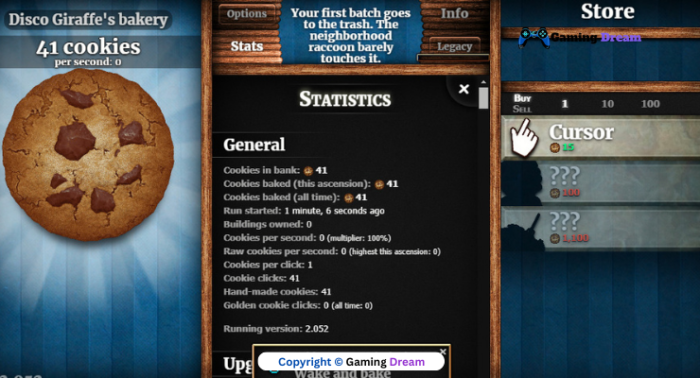
Table of Contents
In today’s digital world, paper education is still very important. This article will show how paper-based learning helps students succeed. It teaches essential skills and encourages creativity.
But what if paper learning could be more than just old-fashioned? Could it be the secret to a stronger connection to learning and key skills for tomorrow? Let’s explore how paper keeps its value in today’s schools.
Key Takeaways
- Fundamental paper education lays a solid foundation for academic success and lifelong learning
- Paper-based resources foster hands-on creativity and engagement in the learning process
- Embracing the timeless traditions of paper-based learning can cultivate essential skills for the future
- Paper-based education promotes a deeper connection to the learning process and tactile engagement
- Fundamental paper education remains relevant in the digital age, offering a balanced approach to learning
Embracing the Timeless Value of Paper
In today’s world, we often forget the value of paper. It’s a tangible medium that connects us to learning in a way digital screens can’t. This connection is unique and powerful.
The Tangible Connection to Learning
When we touch paper-based resources, we engage our senses deeply. This experience of holding a book, turning pages, and writing notes by hand helps us remember better. It also helps us understand subjects more fully.
Environmental Sustainability in Education
Many paper-based resources are actually good for the environment. By choosing paper that’s responsibly sourced and recyclable, we support fundamental paper education. This helps protect our planet.
Paper-based learning is more than just a classroom tool. It offers a break from the digital world. By using tactile learning experiences from paper, students form a strong bond with their education.
The Essential Tools for Fundamental Paper Education
Successful fundamental paper education needs the right essential classroom tools. These primary education materials and foundational learning resources help students learn important skills. They also let students interact with the curriculum in a fun way.
At the heart of introductory educational aids are notebooks and writing utensils. Students use spiral-bound journals and composition books to write and draw. They also use pencils, pens, and erasers to improve their work and try different styles.
But there’s more to fundamental paper education than just the basics. Art and craft supplies like colored pencils, markers, and crayons let students play with colors and designs. Scissors, glue sticks, and construction paper help them make projects that show off their creativity.
By choosing the right essential classroom tools, teachers can make learning fun and hands-on. This helps students develop important skills.
Cultivating Creativity through Hands-On Experiences
Fundamental paper education teaches students to be creative. It lets them express themselves through art and crafts. With tools like drawing pads and colored pencils, students’ imaginations grow. They learn to love learning in new ways.
Unleashing Imagination with Art and Craft Supplies
Using art and craft supplies lets students unleash their imagination. They can draw their own designs or make origami. These activities help them think critically and solve problems.
Teachers give students many art and craft supplies. This creates a space where creativity thrives. Students learn with excitement and curiosity. They also improve their fine motor skills.
Adding art and craft supplies to lessons makes learning fun. Students explore their creativity and imagination. They also develop skills for learning all their lives.
Developing Fine Motor Skills and Hand-Eye Coordination
Working with fundamental paper education is great for young learners. It helps them improve fine motor skills and hand-eye coordination. Activities like cutting, folding, and coloring are key. They help students get better at using their hands and understanding space.
Cutting, Folding, and Coloring for Early Childhood Development
Children start to learn a lot from paper-based activities early on. Cutting shapes, folding origami, and coloring designs are very helpful. They boost fine motor skills and hand-eye coordination, which are important for early childhood development.
These activities also help connect the brain and body. This gets young minds ready for more challenging tasks later on.
| Activity | Skill Development | Benefits |
| Cutting | Fine motor skills, hand-eye coordination | Improves dexterity, spatial awareness, problem-solving |
| Folding | Fine motor skills, hand-eye coordination, spatial reasoning | Enhances problem-solving, critical thinking, creativity |
| Coloring | Fine motor skills, hand-eye coordination, color recognition | Promotes concentration, self-expression, emotional development |
By doing these fundamental paper education activities, young learners gain important skills. These skills are crucial for success in school and personal growth. The hands-on nature of these activities strengthens the brain-body connection. This prepares them for a lifetime of learning and exploration.
Fundamental Paper Education for Literacy
Fundamental paper education is key for learning to read and write. It includes activities like handwriting, letter recognition, and writing assignments. These activities help students become proficient in reading and writing, preparing them for future success.
Building Blocks of Reading and Writing
Using paper, like worksheets and storybooks, helps kids learn the basics of reading and writing. This hands-on method lets them practice writing letters, learn new words, and understand how written language works.
- Handwriting practice helps students develop fine motor skills and improve letter recognition.
- Creating book reports and writing assignments on paper encourages critical thinking and self-expression.
- Interacting with physical storybooks and reading materials fosters a love of literature and language.
By using paper in literacy lessons, teachers give students the tools they need to read and write well. This sets them up for success in school and beyond.
| Literacy Skill | Fundamental Paper Education |
| Letter Recognition | Handwriting practice and alphabet activities |
| Vocabulary Development | Reading and writing assignments using paper-based materials |
| Comprehension and Analysis | Book reports and book discussions on physical books |
| Creative Expression | Story writing, poetry, and journal activities on paper |
Incorporating Fundamental Paper Education into STEM Learning
In today’s world, mixing paper education with STEM subjects is key. It makes learning fun and hands-on. Students get to explore science, design engineering, and think critically. These skills are vital for the modern job market.
Paper-based tools add a real touch to STEM learning. They help students understand science and engineering better. By making paper models and doing experiments, they dive deep into these subjects.
- Explore scientific phenomena using paper-based models and experiments
- Develop engineering design skills by prototyping and testing paper-based designs
- Cultivate critical thinking and problem-solving abilities through hands-on STEM activities
- Foster creativity and innovation by combining paper-based resources with STEM learning
Adding paper education to STEM makes learning exciting. It lets students take charge of their learning. They learn science and math better and develop important skills for the future.
| Fundamental Paper Education in STEM | Benefits |
| Paper-based models and experiments | Deeper understanding of scientific principles |
| Paper prototyping and testing | Improved engineering design skills |
| Hands-on STEM activities | Enhanced critical thinking and problem-solving |
| Combining paper and digital resources | Fostering creativity and innovation |
By using paper in STEM, teachers open up new possibilities for students. They prepare them for a world that’s always changing. Students get the skills and mindset to succeed in science, technology, engineering, and mathematics.
The Joy of Tactile Learning in a Digital Age
In today’s tech world, paper education brings a welcome break. It brings back the joy of touching and feeling things. By mixing digital tools with paper activities, teachers help students enjoy learning in a special way.
Paper activities use more than one sense, making students focus better than with digital tools alone. The feel of paper and the act of shaping it make learning more real and meaningful.
Finding Balance in a Tech-Driven World
Digital tools have changed education a lot, but paper education is still very important. Teachers can mix digital and paper resources to meet different learning needs. This way, students get a complete learning experience.
- Use paper activities to add a sensory touch to digital lessons.
- Let students be creative with paper crafts and art.
- Help improve fine motor skills with activities like cutting and coloring.
In our tech world, paper education is a key part of learning. It helps students develop important skills and a love for learning. Teachers can help students succeed in the digital age while keeping the value of hands-on learning.
Fundamental Paper Education: A Gateway to Critical Thinking
Fundamental paper education is a key to unlocking critical thinking skills. It helps students see problems from different angles and analyze information deeply. This way, they develop the skills needed for success in school and life.
Working with paper helps students think creatively and find new solutions. Activities like making origami or organizing index cards teach them to think outside the box. This builds their analytical mindset for future challenges.
Also, paper-based learning improves problem-solving skills. Students learn to try new things, solve problems, and keep going even when it’s hard. These skills are crucial for dealing with complex issues later on.
| Skill Developed | Benefit of Fundamental Paper Education |
| Critical Thinking | Encourages students to analyze information, consider multiple perspectives, and devise innovative solutions. |
| Problem-Solving | Fosters adaptability, resilience, and the ability to overcome obstacles through hands-on experimentation. |
| Analytical Mindset | Prepares students for the demands of higher education and real-world challenges by developing a systematic approach to problem-solving. |
By teaching fundamental paper education, educators can prepare students for a complex world. This approach helps build essential skills for success in school and work. It’s a timeless way to learn that sets students up for future achievements.
Fostering Collaboration and Social Skills
Fundamental paper education helps students learn important teamwork and social skills. Through group activities with paper, they learn to talk well, share ideas, and work together. These skills are crucial for success in team settings.
Group Activities with Paper-Based Resources
Activities like art projects and problem-solving with paper help students improve teamwork. These activities teach them to listen, find solutions, and use everyone’s strengths. It’s a great way to learn how to work well together.
- Constructing paper models or sculptures as a group
- Designing and building paper-based structures or contraptions
- Engaging in paper-folding challenges that require teamwork
- Creating collages or other paper-based art projects collaboratively
By working on paper projects together, students learn to communicate and work together. They learn to use each other’s strengths and find solutions. These skills are important for school and work.
| Collaboration-Enhancing Paper Activities | Targeted Social Skills |
| Paper model construction | Communication, problem-solving, decision-making |
| Paper-based structure design | Teamwork, leadership, conflict resolution |
| Paper-folding challenges | Listening, critical thinking, creative thinking |
| Collaborative paper art projects | Compromise, adaptability, appreciation of diversity |
By teaching teamwork and social skills with paper, teachers prepare students for the future. They give them the skills needed to succeed in team environments.
Tailoring Fundamental Paper Education to Diverse Learning Styles
In the world of fundamental paper education, it’s amazing how it can meet many learning styles and needs. Teachers can change paper-based materials and activities to help visual, auditory, and kinesthetic learners. This way, every student can learn in a way that feels right for them.
Visual learners get a lot from paper materials. They see bright pictures, colors, and diagrams that make things clear. This helps them understand better by seeing it all.
Auditory learners do well with paper too. They enjoy listening to stories, talking in groups, and making audio recordings. Paper helps them learn in a way that feels natural to them.
Kinesthetic learners love working with paper. They get to fold, cut, and make things. This hands-on work helps them learn and be creative.
By accepting all diverse learning styles, fundamental paper education lets teachers create personalized learning experiences. This way, every student can do their best. It makes learning fun and fair for everyone.
| Learning Style | Fundamental Paper Education Approach |
| Visual Learners | Vibrant illustrations, color-coded organizational systems, detailed diagrams |
| Auditory Learners | Read-aloud activities, group discussions, audio recordings |
| Kinesthetic Learners | Hands-on manipulation, folding, cutting, and crafting |
The Enduring Legacy of Fundamental Paper Education
Fundamental paper education gives students a strong base for success. It teaches timeless skills like critical thinking and creativity. These skills are vital in today’s technology-driven world.
At the core of fundamental paper education are timeless traditions. Activities like writing and origami build a strong connection to learning. These tactile experiences show that basic tools can unlock a world of future-ready skills.
Students learn to pay attention to details and develop fine motor skills. They also learn to appreciate the tangible aspects of learning. These timeless skills help them succeed in a digital world.
In today’s fast-changing world, fundamental paper education remains important. It reminds us that hands-on learning is still key. It unlocks future-ready skills and supports lifelong growth.
Conclusion
In today’s digital world, learning with paper is still very important. It helps students do well in school and learn skills that last a lifetime. Teachers and families can help students reach their highest potential by using paper-based learning.
Learning with paper helps students in many ways. It improves their fine motor skills and hand-eye coordination. It also boosts creativity and critical thinking. Activities like art and reading help students connect with the real world.
Starting your educational journey with paper-based learning is a great choice. It can open up many opportunities for success. By going back to basics with paper, you can discover your full potential.
FAQ
What is the importance of fundamental paper education?
Fundamental paper education is key for success in school. It connects learning to real life, boosts creativity, and improves skills like writing and drawing. It’s a great way to learn in today’s digital world, offering hands-on experiences.
How does fundamental paper education cultivate creativity?
It makes learning fun by using art and craft supplies. Students get to use drawing pads, colored pencils, and origami kits. This sparks their imagination and makes them love learning more.
What are the essential tools for fundamental paper education?
Good tools are crucial for paper education. You need notebooks, pencils, and art supplies. These tools help students learn by doing, building important skills.
How does fundamental paper education support the development of fine motor skills and hand-eye coordination?
Paper activities like cutting and coloring help students improve their dexterity. These skills are vital for future success, especially for young children.
What role does fundamental paper education play in literacy development?
It’s vital for learning to read and write. Paper helps with handwriting, recognizing letters, and writing stories. It’s a key part of becoming literate.
How can fundamental paper education be integrated into STEM learning?
It fits well with STEM subjects. Paper tools make learning science, technology, engineering, and math fun and interactive. Students get to explore and think critically.
How can fundamental paper education foster collaboration and social skills?
It helps students work together. Paper-based activities teach them to share ideas and work as a team. This prepares them for future teamwork.
How can fundamental paper education be tailored to diverse learning styles?
It’s flexible for different learners. Teachers can adjust paper activities to suit various learning styles. This ensures everyone can engage with the material in their own way.
What is the enduring legacy of fundamental paper education?
It provides a strong foundation for learning and develops essential skills. Paper education helps students think critically, be creative, and love learning. These skills are valuable in today’s world.






